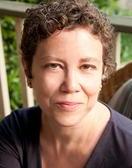
For the Feast of Epiphany, I thought I would re-post this essay from 2010:
As an interfaith child growing up as a Reform Jew, I always had a thing for the Three Kings. I identified with these magicians or astrologers as the outsiders in the Nativity story. Perhaps this is because depictions of the Holy Family in Massachusetts in the 1960s inevitably featured blue eyes and blond hair (WASP coloration) whereas the Magi were always swarthy, with my own dark curls and exotic brown eyes. (The idea that Jesus and Mary and Joseph were Jews themselves was not much mentioned in the New England of my youth.)
As a Jewish child, straining on my metaphorical tiptoes to peek at the forbidden baby Jesus, I felt kinship with the three strangers who appeared out of nowhere into this story to glimpse Jesus, deliver mysterious gifts, and then quietly disappear once again. Presumably, they were changed by their encounter, but the Bible does not describe how they felt after returning home. For all I knew, they remained sceptics like me, with affection and appreciation for baby Jesus but without necessarily forsaking their own religions. In fact, we know nothing about their religions, though one theory is that the term Magi used in Matthew (the only gospel to mention them) originally referred to Persian Zoroastrians. Matthew specifies only that they came “from the east”: some even believe they were Yemeni Jews. We do know for sure that they did not instantly become Christians–we don’t know if they ever met Paul or his followers as they began to build the church many decades later, long after the death of Jesus.
So this week, in honor of the feast that celebrates the Three Kings in many countries around the world, I claim the Magi as fellow interfaith beings. Perhaps they were not beings at all, but only literary devices created by a Christian storyteller who wanted to tie the birth of Jesus back to prophesies in the Torah about a messiah worshiped by kings. But in any case, through my interfaith lens, I cannot help seeing them as Zoroastrians who opened themselves up to strangers in Bethlehem, expanding their spiritual worlds with a mysterious and poetic encounter with the “other.” I imagine how their lives were enriched by straddling their “eastern” culture and religion, whatever it was, and this new experience.
But then, I get to thinking about how all of the early followers of Jesus were Jews, struggling with each other and with themselves over how to integrate the Jewish and the proto-Christian perspectives. In a sense, they were all interfaith children, inhabiting a liminal, in-between space. It was only later, through dark conflict and with tragic consequences, that folks were forced to check off box A or box B or box C: to confine themselves to the Jewish, or Christian, or Zoroastrian label.
Jewish philosopher Martin Buber wrote of the spiritual significance of entering into an “I and Thou” relationship with the other, with the stranger. Ever since Rabbi Harold White re-introduced me to Buber’s thinking, this idea has woven through all of my thoughts on interfaith identity. It is interesting to note that Buber married a non-Jew (though Paula Winkler did convert to Orthodox Judaism), and that he advocated strenuously for a two-state solution in Palestine even before the founding of Israel, and continued to advocate for equal rights for Palestinians in Israel and for interreligious communication. As I embrace these three Magi strangers, I wonder what Buber would have thought of my insistence on viewing the world through my interfaith lens, and on viewing religious history as a continuous evolution formed by encounters with the other.
Being Both: Embracing Two Religions in One Interfaith Family by Susan Katz Miller, available now in hardcover and eBook from Beacon Press.

